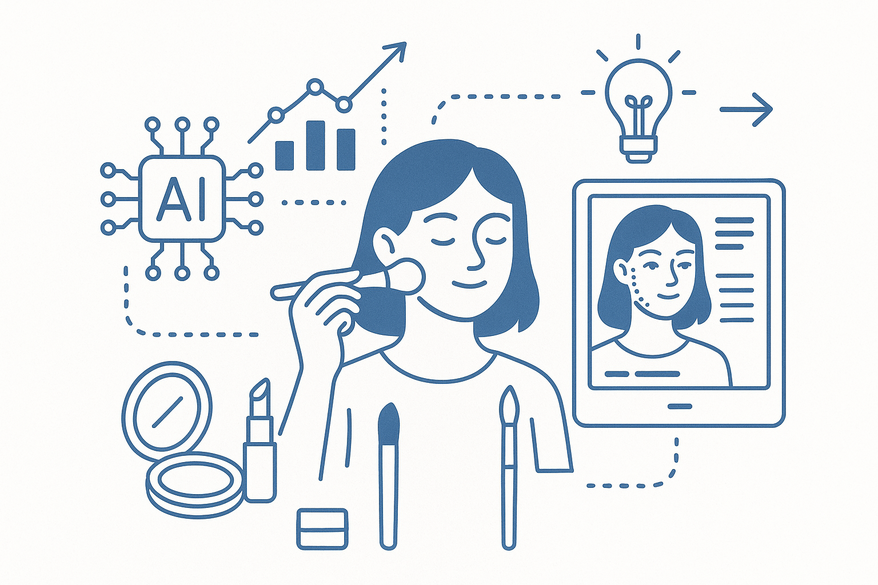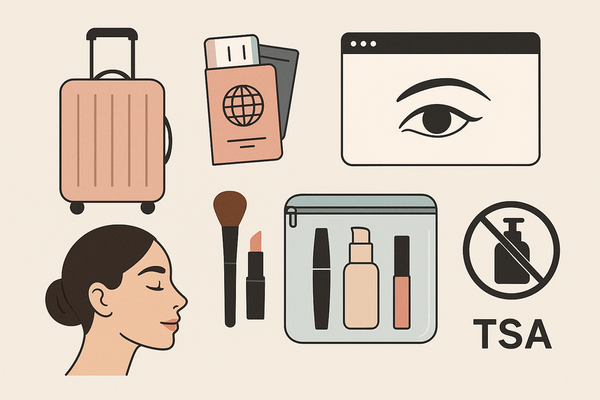Makeup Progress Tracking Tips AI: Elevate Your Skills
Discover how AI enhances makeup progress tracking with data-driven feedback, smart tools, and future trends to refine your style. Start your journey today!

Estimated reading time: 8 minutes
Key Takeaways
- AI provides objective, fast, and personalized feedback to track makeup skill improvement over time.
- Systematic progress tracking—using photos and logs—visualizes growth and informs product choices.
- Consistent photo setup, detailed session logging, and AI analysis are essential for accurate monitoring.
- Top AI apps offer blend-quality scoring, product recommendations, dashboards, and trend forecasting.
- Future trends include AR integration, advanced personalization, and social platform convergence for seamless sharing.
Table of Contents
- Section 1: Understanding Makeup Progress Tracking
- Section 2: The Role of AI in Makeup Progress Tracking
- Section 3: Essential Tips for Successful Tracking
- Section 4: Best Practices and AI Tools
- Section 5: Future Trends in AI and Tracking
- Conclusion
- FAQ
Section 1: Understanding Makeup Progress Tracking
Definition: Makeup progress tracking is the systematic process of documenting your makeup looks through photos and notes to evaluate technique, consistency, and improvement over time. This method transforms vague memories of past looks into clear data on how your application evolves.
Why progress tracking matters:
- Visualizes skill development over weeks or months
- Helps you pick products and methods that work best
- Keeps you motivated when you see real change
Source: progress tracking applications
Traditional methods vs. AI-driven approaches:
- Traditional: Photo diaries, handwritten logs, side-by-side collage comparisons (time-consuming, subjective)
- AI-driven: Automated image analysis, digital filters to normalize lighting and angles, pattern recognition for objective feedback
See How to Track Project Progress for an evolution overview.
Section 2: The Role of AI in Makeup Progress Tracking
AI leverages advanced technologies to turn snapshots into insights:
- Image analysis (computer vision): Assesses color harmony, blending smoothness, edge definition, and finish, highlighting uneven contours or shadow patches.
- Facial recognition (landmark mapping): Detects key points—eyes, brows, nose, lips, cheekbones—to align photos precisely for fair comparisons.
- Trend prediction (machine learning): Forecasts popular palettes, textures, and styles by analyzing thousands of images, suggesting updates based on industry and personal evolution.
Case study: A beauty vlogger used an AI app to track her eyeshadow blending over four weeks. The tool reported a 15% improvement in edge smoothness, measured by reduced pixel jaggedness around her crease lines. She adjusted her brush technique based on that feedback and shared before/after images on her blog.
Key benefits of AI monitoring:
- Objectivity: Removes personal bias from progress reviews
- Speed: Instant feedback for real-time technique tweaks
- Personalization: Tips tailored to your face shape and style history
Tools like AI makeup app routine illustrate these capabilities in action.
Section 3: Essential Tips for Successful Makeup Progress Tracking
- Consistent photography setup
- Use a neutral background (plain wall or white sheet)
- Standardize lighting (natural daylight or a ring light at 5500K)
- Fix the camera angle and distance for every shot
- Detailed session logging
- Record date and time of each session
- Note products: brand, shade, finish (matte, shimmer)
- Include brushes/tools and key techniques (stippling, buffing)
- Leverage AI tools for upload and analysis
- Choose an app that auto-tags lips, eyes, cheeks
- Ensure it compares new images to past records
- Look for percentage-based improvement scores
- Act on automated feedback
- Set SMART goals (Specific, Measurable, Achievable, Relevant, Time-bound)
- Example: “Improve lip line symmetry by 10% in two weeks”
- Review AI recommendations weekly and adjust techniques
- Balance AI with personal style
- Use AI suggestions to refine skills
- Trust your creativity for final look decisions
- Blend data-driven insights with artistic flair
Pitfalls to avoid:
- Over-reliance on metrics—skin reactions or camera glare can skew results
- Privacy risks—only upload to apps with clear security policies
- Neglecting personal feedback—AI is a tool, not a replacement for your taste
Section 4: Best Practices and AI Tools
Here’s a roundup of leading AI tools and best practices:
- App A
- Features: automated blend-quality scoring, side-by-side timeline view
- Pricing: free tier with basic analysis; premium at $4.99/month
- User rating: 4.5/5
- App B
- Features: personalized product recommendations, trend forecasting
- Pricing: $9.99/month with a 7-day trial
- User rating: 4.7/5
- App C
- Features: AR try-on, community sharing, end-to-end progress dashboard
- Pricing: $2.99/month or $24.99/year
- User rating: 4.6/5
Explore leading AI tools in the best makeup analysis review to inform your choice.
Key features to look for:
- Smart photo tagging that auto-detects lips, eyes, cheeks
- Progress dashboards with charts, goal trackers, and timelines
- Calendar reminders for regular uploads and check-ins
- Community galleries for inspiration and peer benchmarks
Privacy & security guidelines:
- Select apps with transparent data policies
- Check for image deletion options and local storage modes
- Verify GDPR or equivalent compliance if you’re in the EU or UK
A number of AI-driven platforms streamline tracking; one example is Makeup Check AI, which automates analysis and goal setting.
Section 5: Future Trends in AI and Makeup Progress Tracking
- AR integration: Real-time virtual try-ons with instant progress scoring before application.
- Advanced personalization: AI that factors in skin type, undertone, and expressions for hyper-tailored feedback.
- Social platform convergence: Seamless sharing of AI-analyzed progress to Instagram Reels or TikTok for peer benchmarking.
- Speculative innovation: Neural networks that simulate long-term progression—predicting how your looks evolve over months.
Conclusion
In summary, AI-powered makeup progress tracking offers a clear path to monitor your technique, receive objective feedback, and stay motivated. We started by defining systematic makeup tracking and highlighting its importance. Then we explored how AI technologies—image analysis, facial recognition, trend prediction—turn snapshots into actionable data. You now have step-by-step tracking tips, a survey of top AI tools and best practices, and a glimpse into future innovations.
Ready to start? Download an AI-powered makeup app today, follow these tips, and watch your skills blossom. Share your journey in the comments—tell us how AI-powered tracking helped you refine your craft and achieve your best looks yet.
FAQ
- What is AI-driven makeup progress tracking? AI-driven tracking uses computer vision and machine learning to objectively analyze and monitor makeup application over time.
- How accurate are AI beauty analysis tools? Accuracy varies, but top tools flag color balance, blending issues, and symmetry with over 90% precision under standardized conditions.
- Is my privacy safe when using these apps? Choose apps with clear data policies, image deletion options, and local storage modes; look for GDPR or equivalent compliance.
- Can AI replace a professional makeup artist? AI is a powerful tool for feedback and trend prediction but should complement—not replace—human creativity and expertise.




